Post by glactus on Feb 17, 2008 6:25:50 GMT
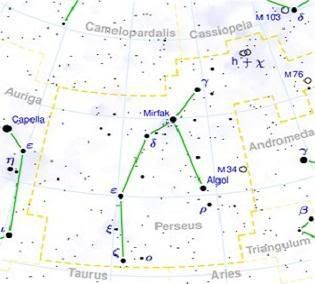
Perseus is a northern constellation, named after the Greek hero who slew the monster Medusa with the help of some godly items. Perseus arcs high overhead in fall and early winter. Many of its stars are immersed in the faint glow of our galaxy, the Milky Way. In fact, if you look at Perseus under dark skies, you may be able to see three of the spiral arms that enfold the Galaxy we call home.
Notable stars:
Alpha Percei
á Per (Mirfak): The brightest star of this constellation is also called Algenib. Mirfak (Arabic for elbow) is a supergiant of spectral type F5 Ib with an apparent brightness of 1.79 lying at a distance of 590 light-years. Its luminosity is 5,000 times, and its diameter is 62 times that of our Sun.
Beta Percei
Algol (â Per): This may not be the brightest star of this constellation, but it definitely is its most famous. Algol (from Arabic al-Ghul, means the ghoul or the Demon Star) represents the eye of the gorgon Medusa. Its apparent brightness ranges between 2.12 and 3.39 magnitude with a period of merely 2.867 days. It is of spectral type B8 V and lies at a distance of only 93 light years.
GK Persei
(also known as Nova Persei 1901) was a bright nova occurring in 1901 in Perseus, reaching a maximum magnitude of 0.2, the brightest supernova nova of modern times until Nova Aquilae in 1918. Distance from Earth is 1,500 light years.
Delta Persei
Delta Persei is a Class B5III, a third-magnitude star in this constellation. It is actually a blue giant that is the second brightest star of the open star cluster known as the Alpha Persei Cluster, second only to Mirfak. The Delta Persei stellar system is located about 530 light years from Earth.
Notable objects:
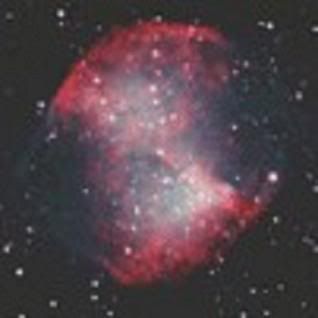
Messier M 76
M76 is also known as the little Dumbell Nebula. Its distance is not well known but is said to be about 3,400 light years from Earth, and consequently its dimensions are also not well known. The nebula shines at an apparent magnitude of 10.1 with a central star of magnitude 16.6. The little Dumbbell Nebula got its name from its resemblance to the Dumbbell Nebula (M27) in Vulpecula.
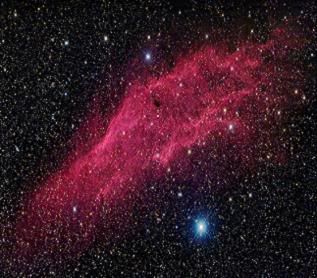
NGC 1499
The California Nebula (NGC 1499) is an emission nebula discovered by E. E. Barnard in 1884. It is so named because it appears to resemble the outline of the US State of California on long exposure photographs. It is almost 2.5° long on the sky and, because of its very low surface brightness, it is extremely difficult to observe visually. Magnitude is 7.0 and distance from Earth is 1,000 light years.
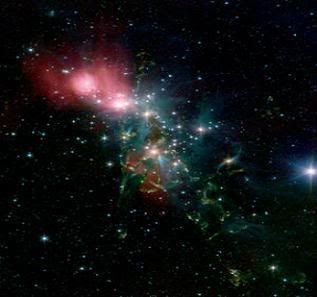
NGC 1333
NGC 1333 is a region towards the constellation of Perseus that harbors newly formed stars that are less than 1 million years old. . On the left side of this image the light of bright star is scattered and looks primarily blue. Other stars barely make there presence known due to the enveloping clouds of gas and dust. There are also several stellar outflows from the baby stars in this image and regions where the gas is glowing strongly red due to the copious amount of radiation some of these stars release. Magnitude is 17.7, and distance from Earth is 1,000 light years.
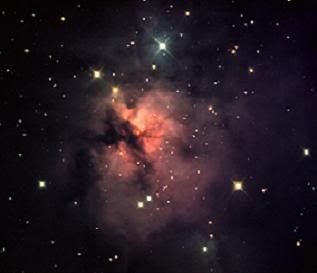
NGC 1579
NGC 1579 is a Diffuse reflection nebula illuminated by the young and bright emission line star LkH-alpha 101. It is this star that provides the intense red color. The emission portion of this gas is glowing red whereas the star with the blue clouds around it are due to scattered light from the reflection nebula. Magnitude is 9.9 and distance from Earth 2,100 light years.
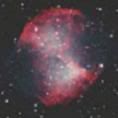
Messier M 76
credits:
Perseus map: Wikipedia
en.wikipedia.org/wiki/Perseus_(constellation)
image: Messier M 76:deepskyobserving
www.deepskyobserving.com/Messier/M76.htm
image: NGC 1333: Wikipedia. Spitzer:
SIRTF/NASA/JPL.
en.wikipedia.org/wiki/NGC_1333
image: NGC 1499: night sky
www.nightsky.at/Photo/Neb/NGC1499_WN.jpg
image: NGC 1579: astrooptik
www.astrooptik.com/Bildergalerie/PolluxGallery/NGC1579.htm


